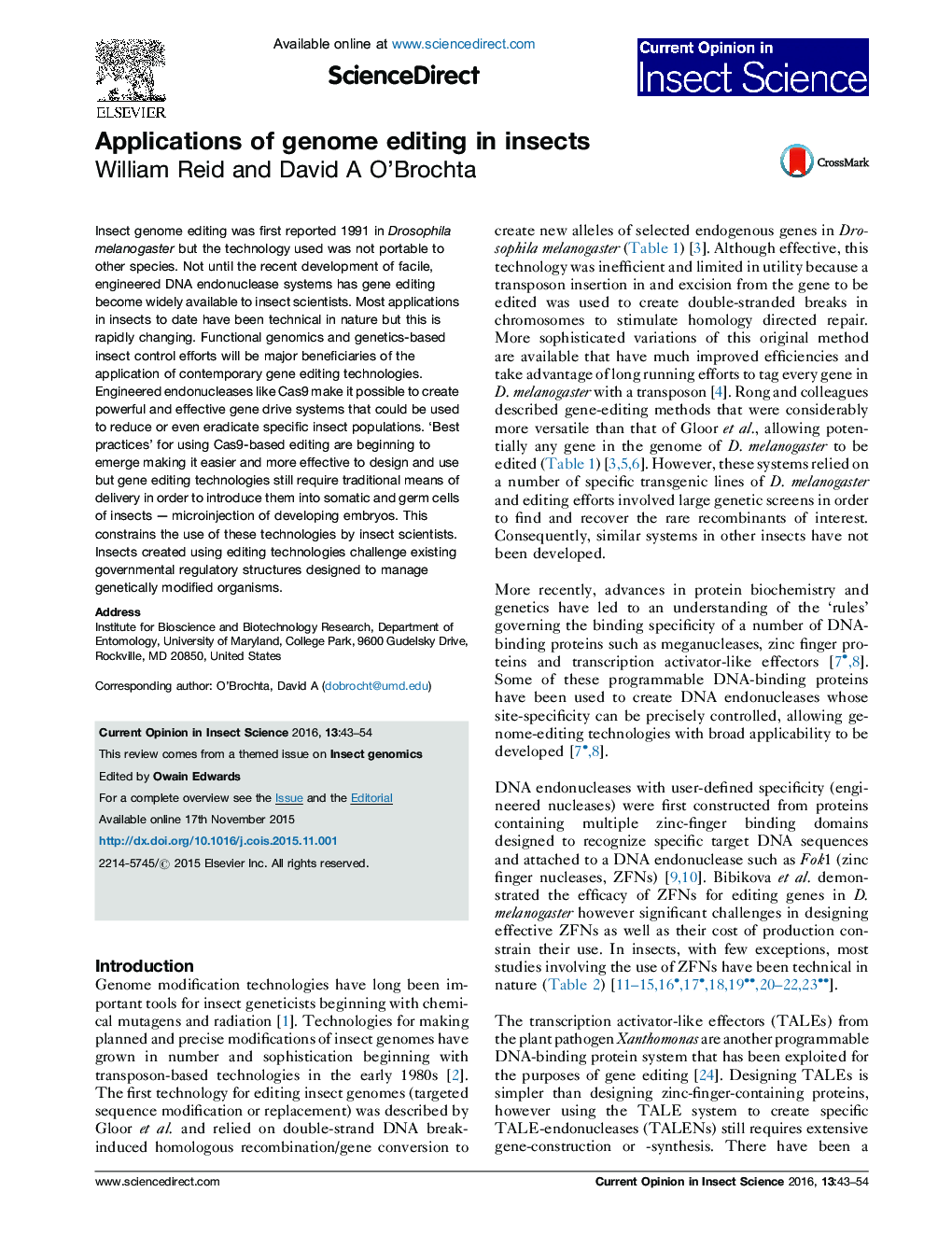| کد مقاله | کد نشریه | سال انتشار | مقاله انگلیسی | نسخه تمام متن |
|---|---|---|---|---|
| 4508196 | 1624377 | 2016 | 12 صفحه PDF | دانلود رایگان |
• Tunable DNA binding protein systems provide platforms for gene editing and more.
• Modifying/editing insect genotypes is not limited to ‘model’ insects.
• Delivering gene editing technologies by embryo microinjection is a serious technical constraint.
• Best practices are currently not well defined, making insect gene editing challenging.
Insect genome editing was first reported 1991 in Drosophila melanogaster but the technology used was not portable to other species. Not until the recent development of facile, engineered DNA endonuclease systems has gene editing become widely available to insect scientists. Most applications in insects to date have been technical in nature but this is rapidly changing. Functional genomics and genetics-based insect control efforts will be major beneficiaries of the application of contemporary gene editing technologies. Engineered endonucleases like Cas9 make it possible to create powerful and effective gene drive systems that could be used to reduce or even eradicate specific insect populations. ‘Best practices’ for using Cas9-based editing are beginning to emerge making it easier and more effective to design and use but gene editing technologies still require traditional means of delivery in order to introduce them into somatic and germ cells of insects — microinjection of developing embryos. This constrains the use of these technologies by insect scientists. Insects created using editing technologies challenge existing governmental regulatory structures designed to manage genetically modified organisms.
Journal: Current Opinion in Insect Science - Volume 13, February 2016, Pages 43–54
